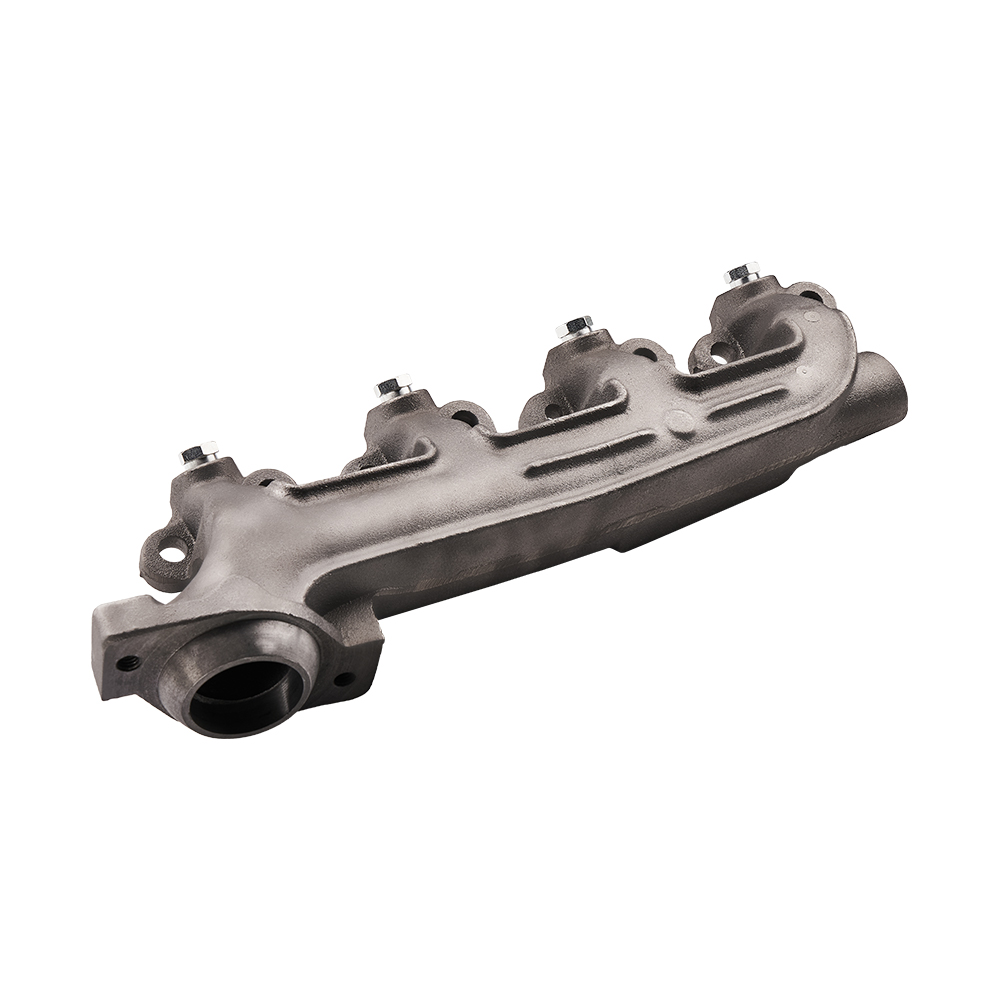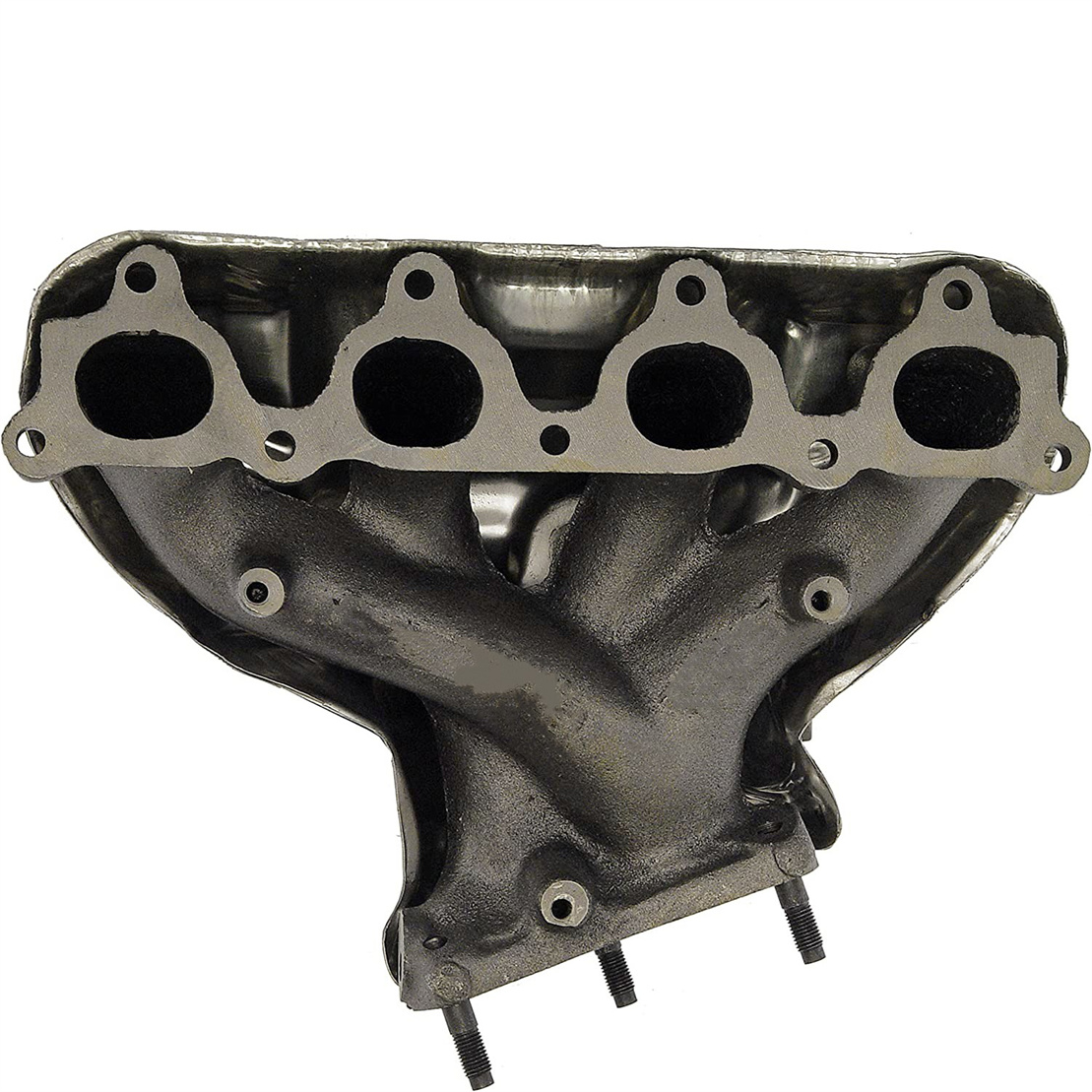
Replacing your Ford exhaust manifold requires careful attention to detail. A step-by-step guide ensures you complete the task efficiently and safely. By following the instructions, you can enhance your vehicle’s performance. A successful replacement reduces engine noise and improves exhaust flow. This process not only boosts your car’s efficiency but also extends its lifespan. Taking the time to replace the manifold correctly benefits you in the long run. You gain a smoother ride and a quieter engine, making your driving experience more enjoyable.
Key Takeaways
- Identify symptoms of a faulty exhaust manifold, such as unusual noises, decreased engine performance, and visible cracks or leaks, to address issues early.
- Gather all necessary tools and safety gear before starting the replacement to ensure a smooth and safe process.
- Follow a step-by-step guide for removing the old manifold and installing the new one, paying attention to proper alignment and securing connections.
- Conduct thorough tests after installation, including visual inspections for leaks and a test drive to evaluate engine performance.
- Regular maintenance and prompt repairs can prevent future exhaust manifold issues, enhancing your vehicle’s performance and longevity.
- Replacing a faulty exhaust manifold not only improves exhaust flow and reduces noise but also contributes to a smoother and more enjoyable driving experience.
Identifying Symptoms of a Faulty Ford Exhaust Manifold

Recognizing the symptoms of a faulty Ford Exhaust Manifold is crucial for maintaining your vehicle’s performance. Early detection can save you from costly repairs and ensure your safety on the road.
Common Signs of Exhaust Manifold Issues
Unusual Noises
You might hear strange noises coming from your engine. These sounds often resemble ticking or tapping. They occur when exhaust gases escape through cracks or leaks in the manifold. Pay attention to these noises, especially during acceleration.
Decreased Engine Performance
A faulty exhaust manifold can lead to reduced engine power. You may notice your vehicle struggling to accelerate or maintain speed. This happens because the manifold fails to efficiently direct exhaust gases away from the engine, affecting its performance.
Visible Cracks or Leaks
Inspect your exhaust manifold for visible cracks or leaks. These are clear indicators of damage. You might see black soot around the manifold area, which suggests exhaust gases are escaping. Regular visual checks can help you spot these issues early.
Importance of Early Detection
Preventing Further Damage
Addressing manifold issues promptly prevents further damage to your vehicle. Ignoring these problems can lead to more severe engine damage. By acting quickly, you protect your engine and avoid expensive repairs.
Ensuring Vehicle Safety
A well-functioning exhaust manifold is essential for your safety. Leaks can allow harmful gases to enter the cabin, posing health risks. Early detection and repair ensure that your vehicle remains safe for you and your passengers.
Preparing for the Replacement
Before you begin replacing your Ford exhaust manifold, gather all necessary tools and materials. Proper preparation ensures a smooth and efficient process.
Gathering Necessary Tools and Materials
Wrenches and Sockets
You need a set of wrenches and sockets. These tools help you loosen and tighten bolts during the replacement. Ensure you have the correct sizes for your vehicle’s specific needs.
Replacement Manifold and Gaskets
Purchase a replacement manifold and gaskets. Make sure they match your Ford model. The Ford Exhaust Manifold for the 5.8L, 351 engine is a reliable choice. It fits perfectly and meets original equipment specifications.
Safety Gear
Wear safety gear to protect yourself. Use gloves to shield your hands from sharp edges. Safety glasses prevent debris from entering your eyes. Always prioritize your safety during the replacement process.
Preparing the Vehicle
Ensuring the Engine is Cool
Allow the engine to cool completely before starting. A hot engine can cause burns. Wait for at least an hour after driving to ensure it is safe to work on.
Disconnecting the Battery
Disconnect the battery to prevent electrical shocks. Remove the negative cable first. This step ensures your safety while working on the vehicle.
By following these preparation steps, you set the stage for a successful replacement. Proper tools and safety measures make the process smoother and safer.
Step-by-Step Guide to Replacing the Ford Exhaust Manifold
Replacing the Ford Exhaust Manifold involves several steps. Follow this guide to ensure a smooth and successful process.
Removing the Old Exhaust Manifold
Loosening Bolts and Fasteners
Begin by locating the bolts and fasteners that secure the exhaust manifold to the engine. Use the appropriate wrench or socket to loosen them. Work systematically, starting from one end and moving to the other. This method helps prevent any undue stress on the manifold. Keep track of all bolts and fasteners as you remove them.
Detaching the Manifold from the Exhaust System
Once you’ve loosened all the bolts, gently detach the manifold from the exhaust system. Carefully pull it away from the engine block. Ensure you do not damage any surrounding components. If the manifold sticks, use a gentle rocking motion to free it. Take your time to avoid causing any harm to the engine or exhaust system.
Installing the New Exhaust Manifold
Positioning the New Manifold
Take the new Ford Exhaust Manifold and position it in place. Align it with the engine block and the exhaust system. Ensure that the manifold fits snugly and matches the original equipment specifications. This alignment is crucial for optimal performance and efficiency.
Securing with Bolts and Gaskets
With the manifold in position, begin securing it with bolts and gaskets. Start by placing the gaskets between the manifold and the engine block. Insert the bolts through the manifold and into the engine block. Tighten them evenly to ensure a secure fit. Use a torque wrench to apply the correct amount of pressure, preventing any leaks or misalignment.
Reconnecting the Exhaust System
Finally, reconnect the exhaust system to the new manifold. Ensure all connections are tight and secure. Double-check each joint for any potential leaks. Once everything is in place, give the system a final inspection. This step ensures that your Ford Exhaust Manifold functions correctly and efficiently.
By following these steps, you can successfully replace your Ford Exhaust Manifold. This process enhances your vehicle’s performance and ensures a quieter, smoother ride.
Testing the Repair
After replacing your Ford Exhaust Manifold, it’s crucial to test the repair to ensure everything functions correctly. This step confirms that the installation was successful and that your vehicle operates safely and efficiently.
Checking for Leaks
Visual Inspection
Begin by visually inspecting the area around the new exhaust manifold. Look for any signs of exhaust leaks, such as black soot or residue. These indicators suggest that exhaust gases might be escaping. Ensure all connections and gaskets are secure and properly aligned. A thorough visual check helps you identify potential issues early.
Listening for Unusual Sounds
Start the engine and listen carefully for any unusual sounds. Pay attention to ticking or hissing noises, which may indicate a leak in the exhaust system. These sounds often occur when exhaust gases escape through small gaps or misaligned components. If you hear anything unusual, recheck the manifold’s connections and tighten any loose bolts.
Evaluating Engine Performance
Test Drive
Take your vehicle for a test drive to evaluate its performance. Notice how the engine responds during acceleration and at different speeds. A properly installed exhaust manifold should result in smooth acceleration and consistent power delivery. If you experience any hesitation or lack of power, revisit the installation steps to ensure everything is correctly positioned.
Monitoring for Warning Lights
Keep an eye on the dashboard for any warning lights. The check engine light may illuminate if there are issues with the exhaust system. If this occurs, use an OBD-II scanner to diagnose the problem. Address any detected issues promptly to maintain your vehicle’s performance and safety.
By conducting these tests, you confirm that the Ford Exhaust Manifold replacement was successful. This process ensures your vehicle runs smoothly and efficiently, providing you with a reliable and enjoyable driving experience.
Replacing your Ford Exhaust Manifold involves several key steps. First, identify symptoms of a faulty manifold. Next, prepare by gathering tools and ensuring safety. Follow the step-by-step guide to remove the old manifold and install the new one. Finally, test the repair to confirm success. Carefully following this guide ensures a successful repair. Regular maintenance prevents future issues and keeps your vehicle running smoothly. By taking these steps, you enhance your car’s performance and enjoy a quieter ride.
FAQ
What tools do I need to replace my Ford exhaust manifold?
To replace your Ford exhaust manifold, gather a set of wrenches and sockets. These tools help you loosen and tighten bolts. Ensure you have the correct sizes for your vehicle. Additionally, have safety gear like gloves and safety glasses to protect yourself during the process.
How can I tell if my exhaust manifold is faulty?
Look for unusual noises, decreased engine performance, and visible cracks or leaks. Strange sounds often resemble ticking or tapping. Reduced power indicates inefficient exhaust gas flow. Inspect for black soot around the manifold, which suggests escaping gases.
Why is it important to replace a faulty exhaust manifold promptly?
Replacing a faulty exhaust manifold prevents further engine damage. Ignoring issues can lead to severe problems and costly repairs. A well-functioning manifold ensures vehicle safety by preventing harmful gases from entering the cabin.
Can I replace the exhaust manifold myself, or should I hire a professional?
You can replace the exhaust manifold yourself if you have the necessary tools and follow a step-by-step guide. However, if you’re unsure or uncomfortable with the process, hiring a professional ensures a proper installation.
How long does it take to replace an exhaust manifold?
The time required varies based on your experience and vehicle model. Generally, replacing an exhaust manifold takes a few hours. Allow extra time for preparation and testing to ensure a successful repair.
What should I do if I hear unusual sounds after replacing the manifold?
If you hear ticking or hissing noises, check for leaks in the exhaust system. Ensure all connections and gaskets are secure. Tighten any loose bolts and inspect for misaligned components.
How do I ensure the new manifold fits my Ford vehicle?
Purchase a replacement manifold that matches your Ford model. The Ford Exhaust Manifold for the 5.8L, 351 engine is a reliable choice. It fits perfectly and meets original equipment specifications.
What are the benefits of replacing the exhaust manifold?
Replacing the exhaust manifold improves exhaust flow and reduces engine noise. It enhances vehicle performance and efficiency. A successful replacement also extends your car’s lifespan and provides a smoother, quieter ride.
How can I prevent future exhaust manifold issues?
Regular maintenance helps prevent future issues. Conduct visual inspections for cracks or leaks. Address any unusual noises or performance changes promptly. Keeping your vehicle in good condition ensures long-term reliability.
Is it necessary to disconnect the battery before starting the replacement?
Yes, disconnecting the battery prevents electrical shocks. Remove the negative cable first. This step ensures your safety while working on the vehicle.
Post time: Dec-17-2024



